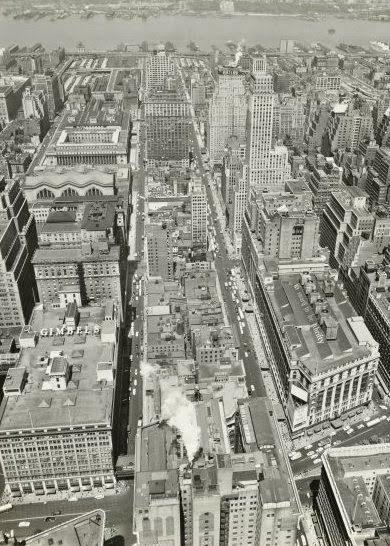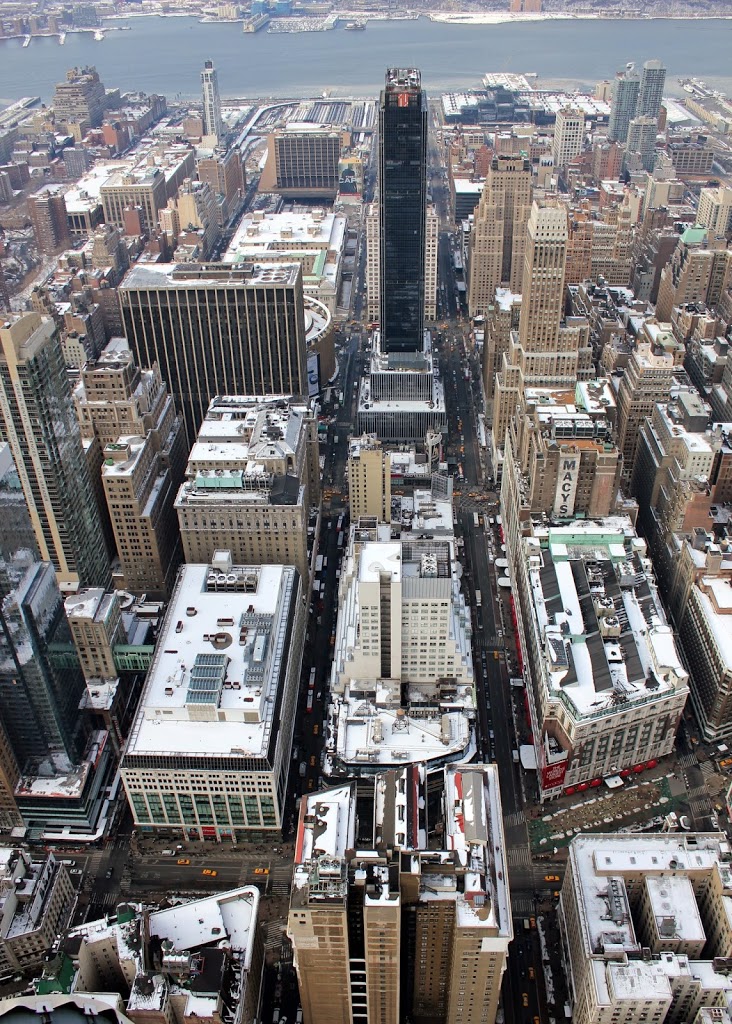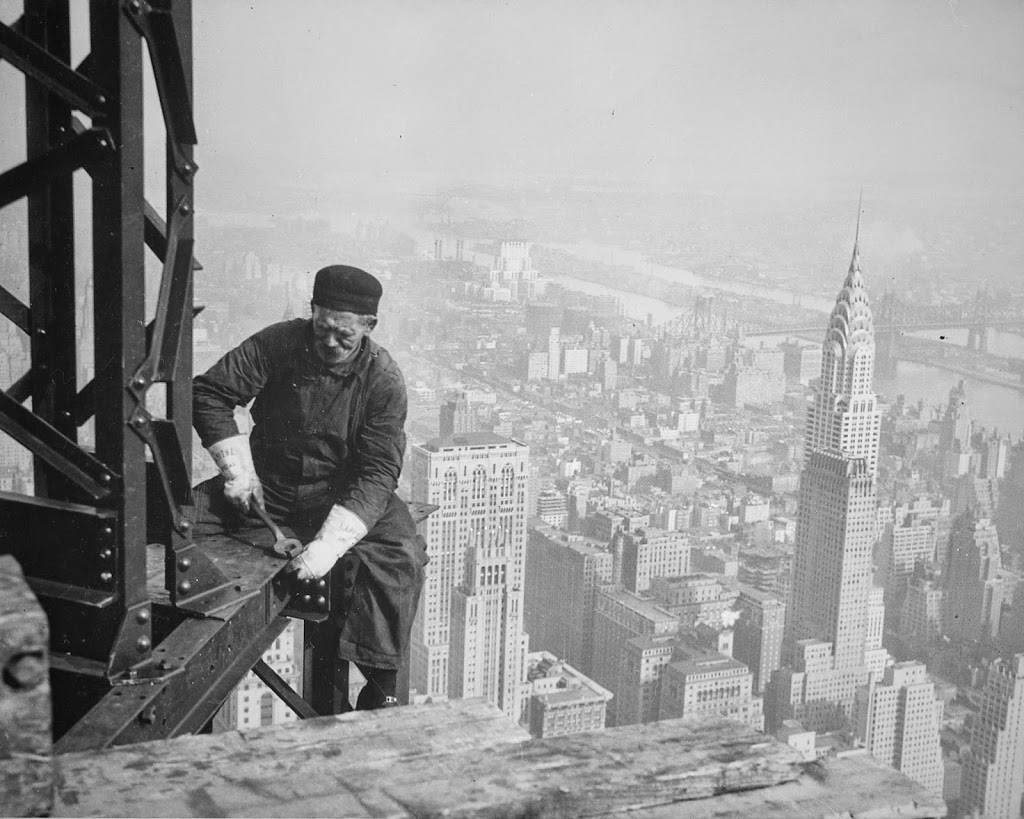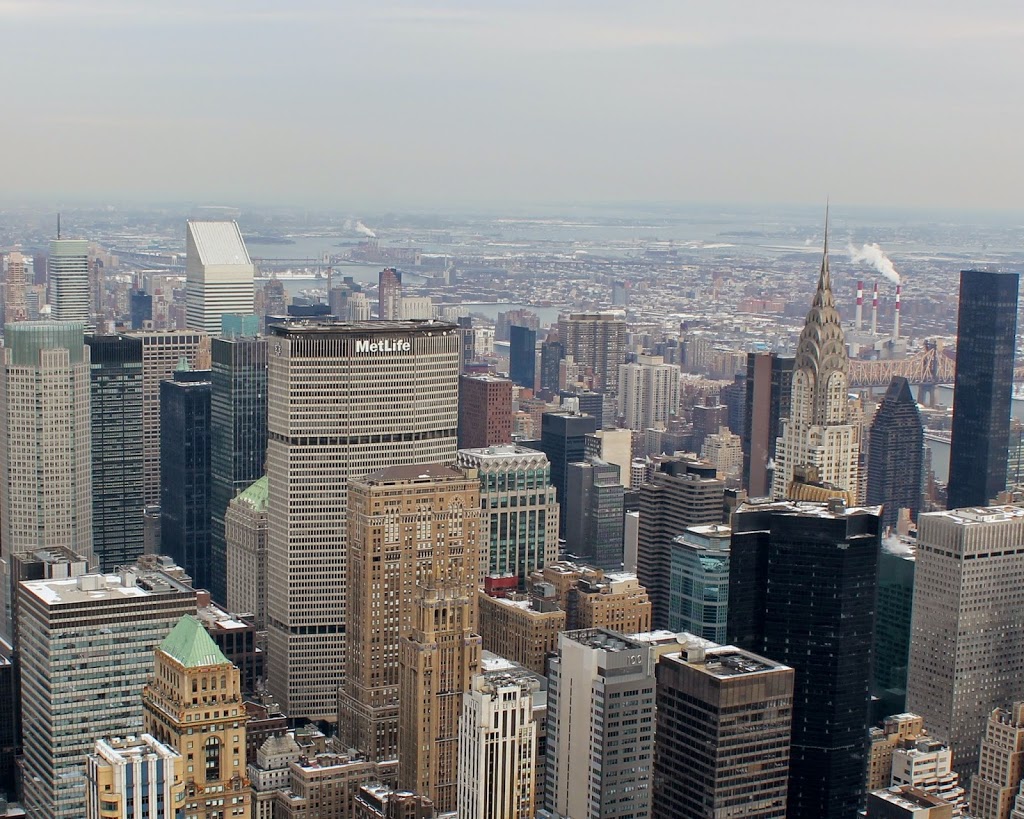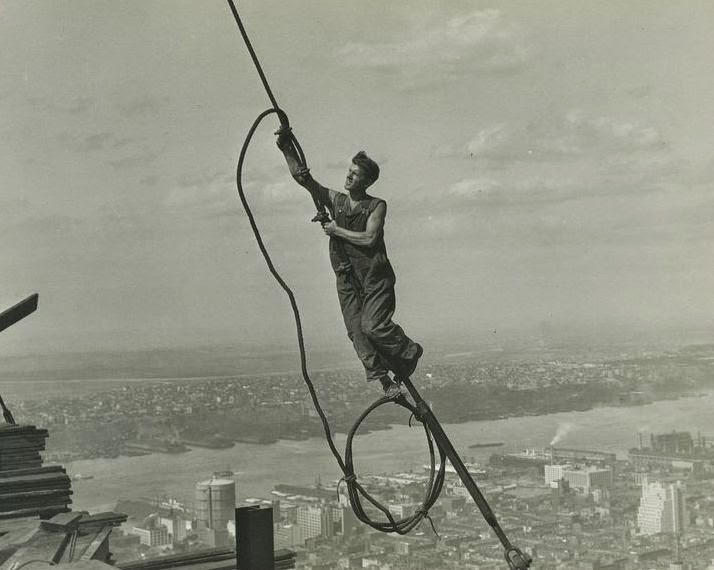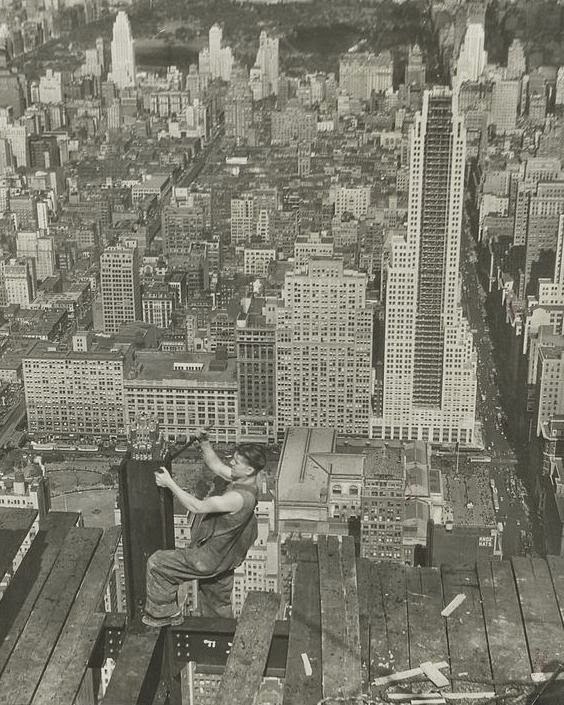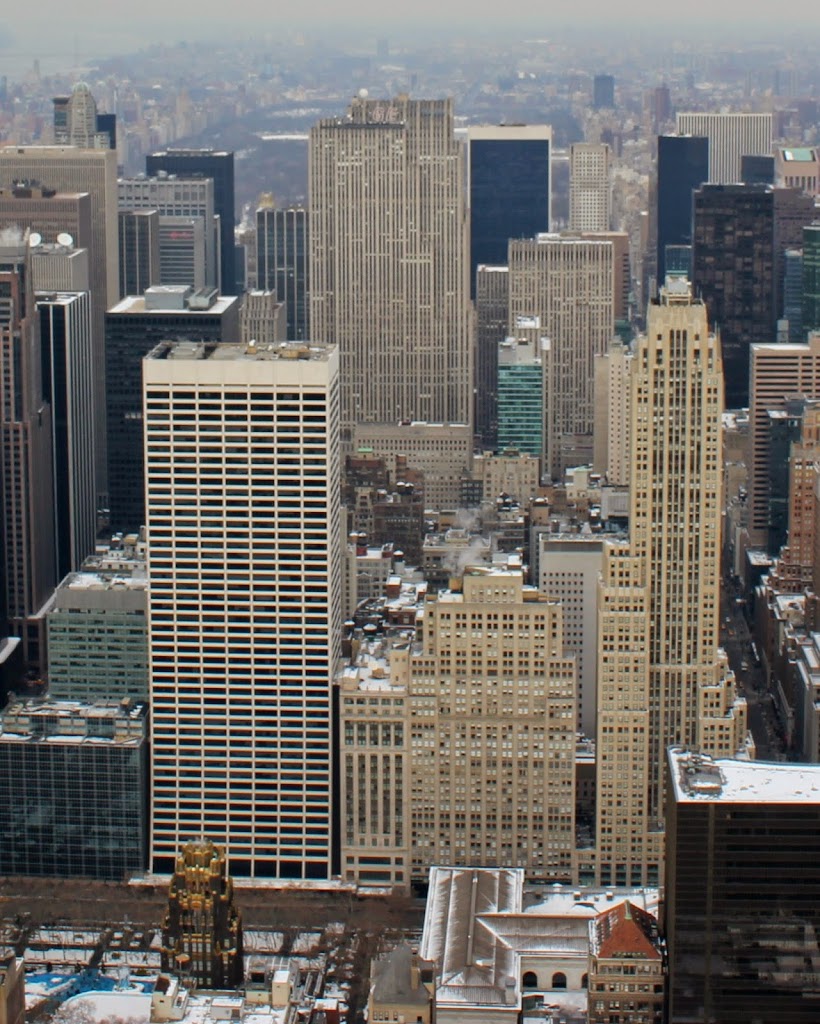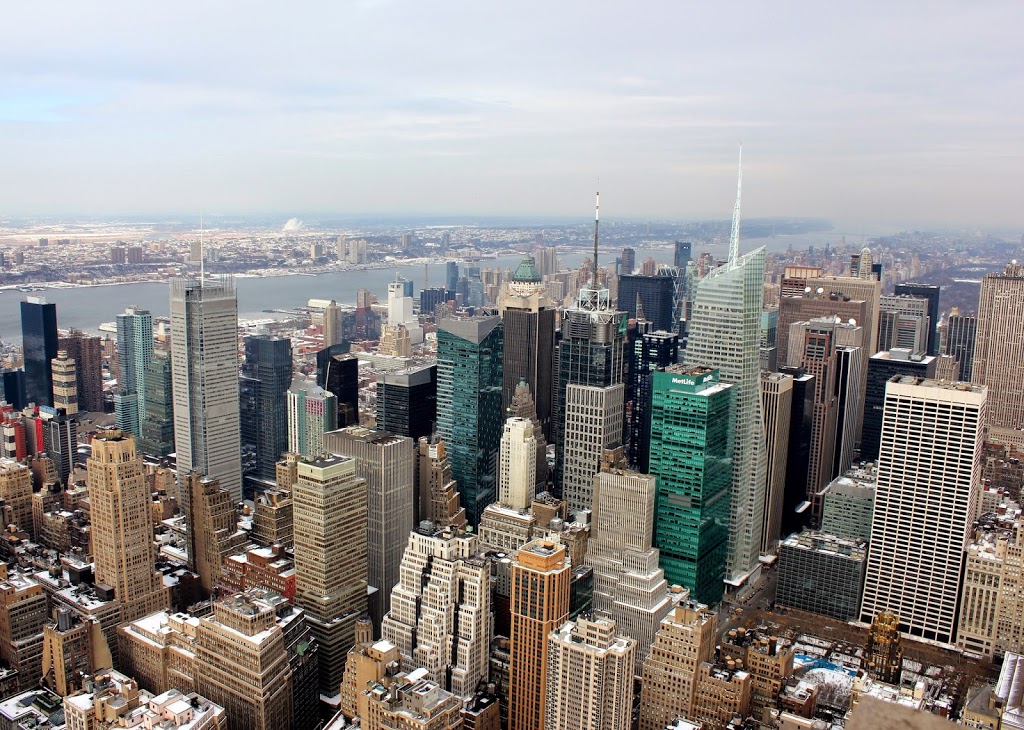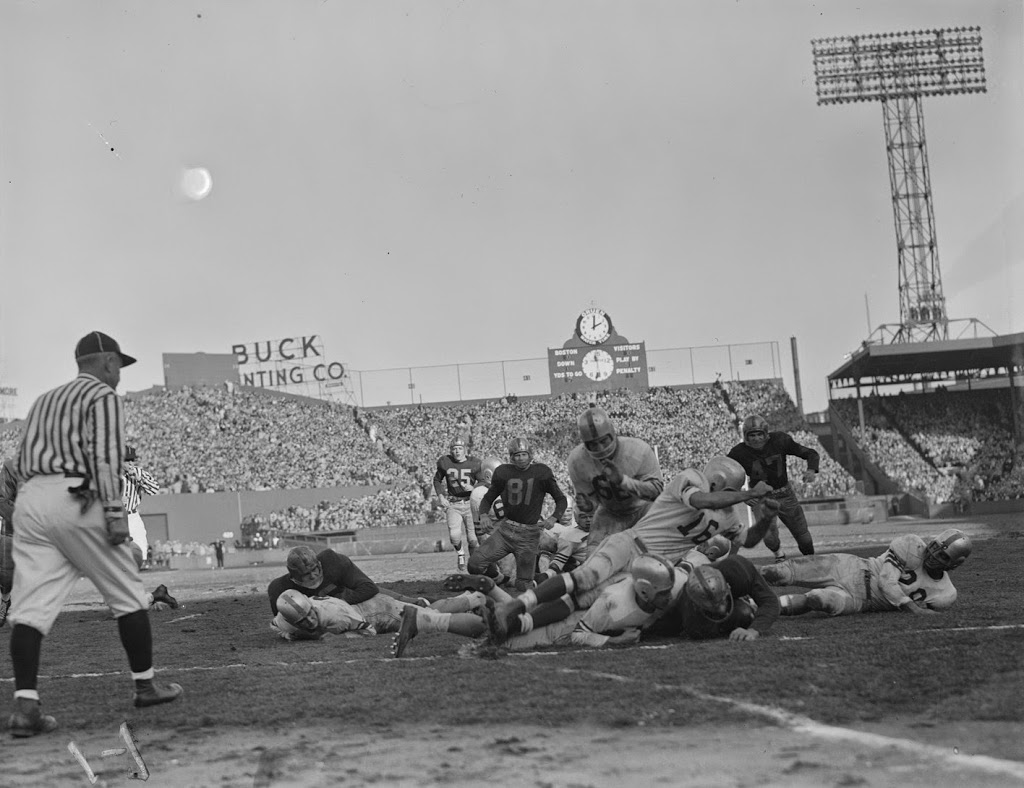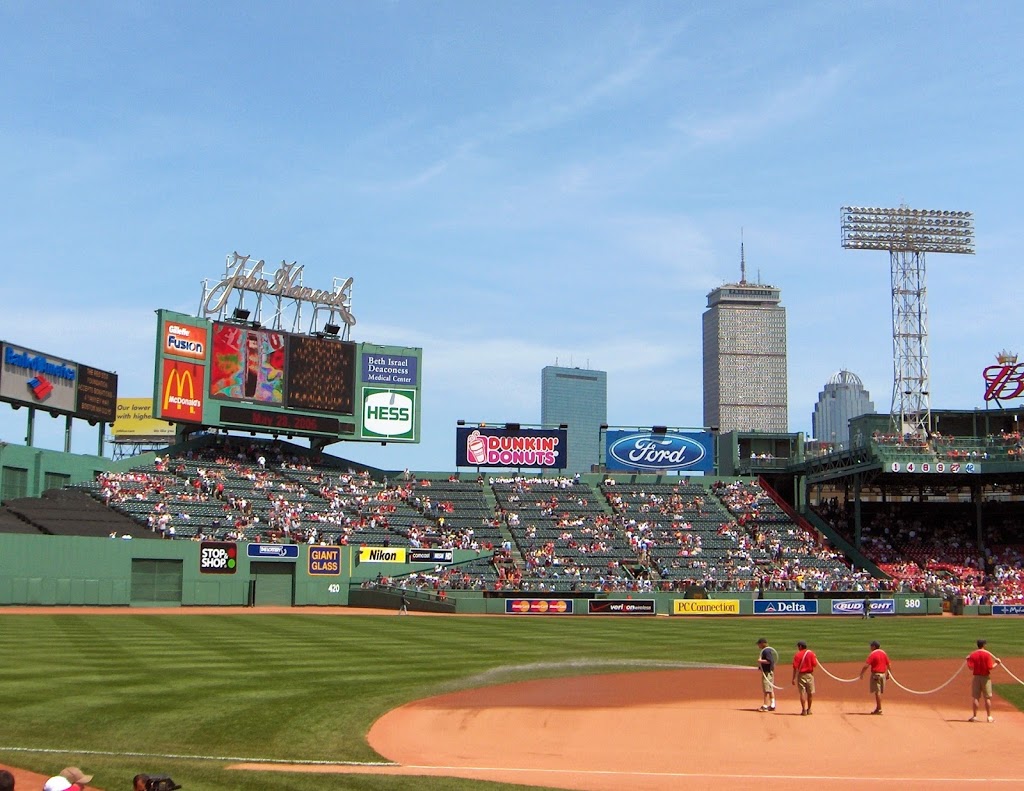The view looking west from the Empire State Building in 1951. Photo courtesy of New York Public Library.
The scene in 2011:
There hasn’t been an incredible amount of change in the past 60 years in this small wedge of Manhattan, but one notable building that no longer exists is Penn Station, seen in the upper left of the 1951 photo. The above-ground part of the historic station was demolished in 1963 and replaced with Madison Square Garden, which is barely visible in the 2011 photo – the round building immediately to the left of the tall black skyscraper.

